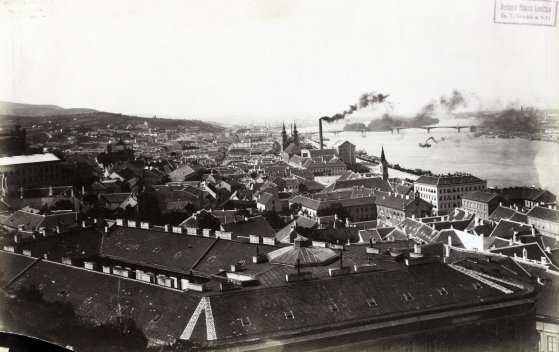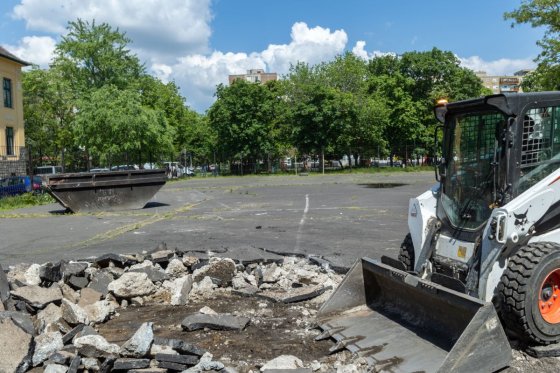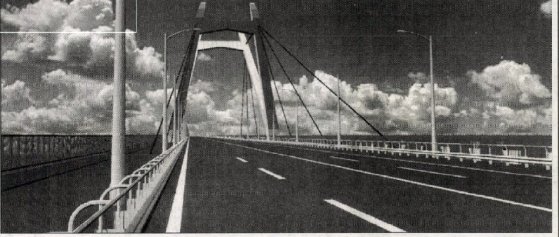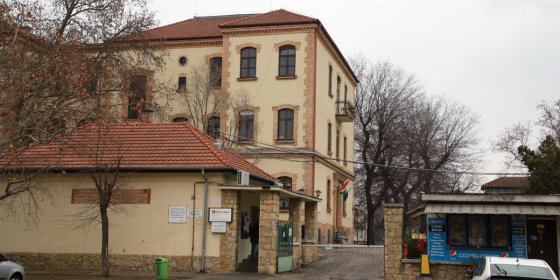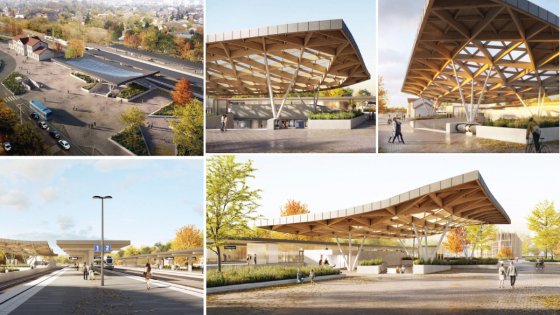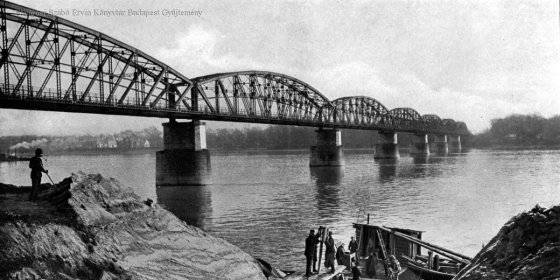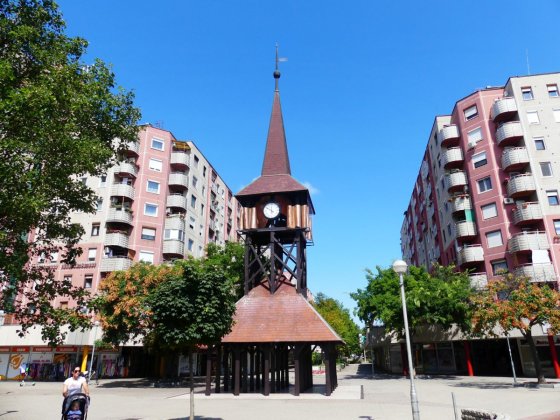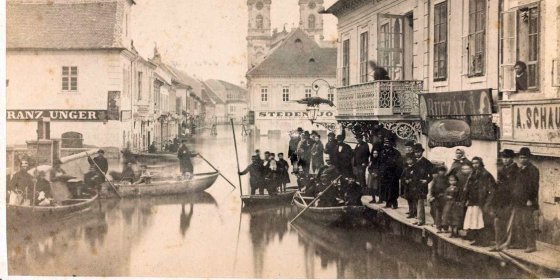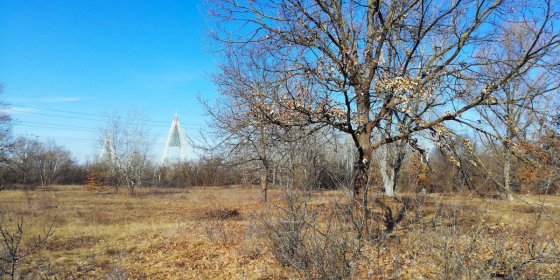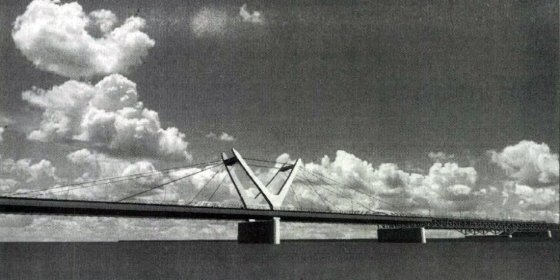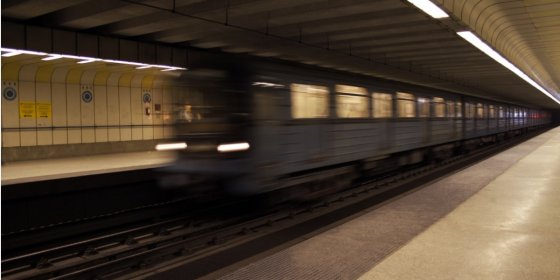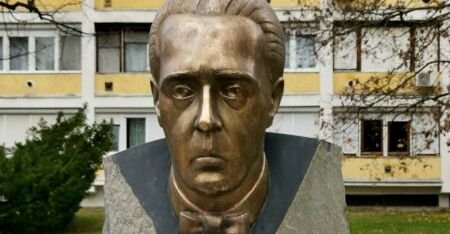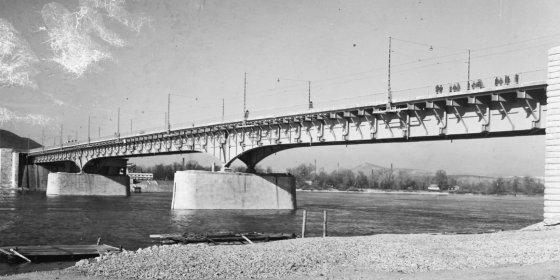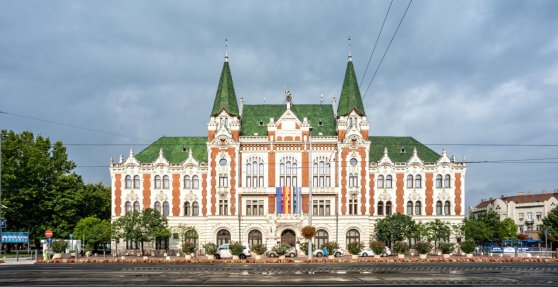 The „intertwined history” of the bridges and the city of Budapest
Which ideas and events have shaped the fate of bridges of Budapest and the cityscape? Alongside many other interesting facts, this question is also answered this newly published book by the Budapest City Archives, which introduces the history of bridges in Budapest.
The „intertwined history” of the bridges and the city of Budapest
Which ideas and events have shaped the fate of bridges of Budapest and the cityscape? Alongside many other interesting facts, this question is also answered this newly published book by the Budapest City Archives, which introduces the history of bridges in Budapest.
Újpest
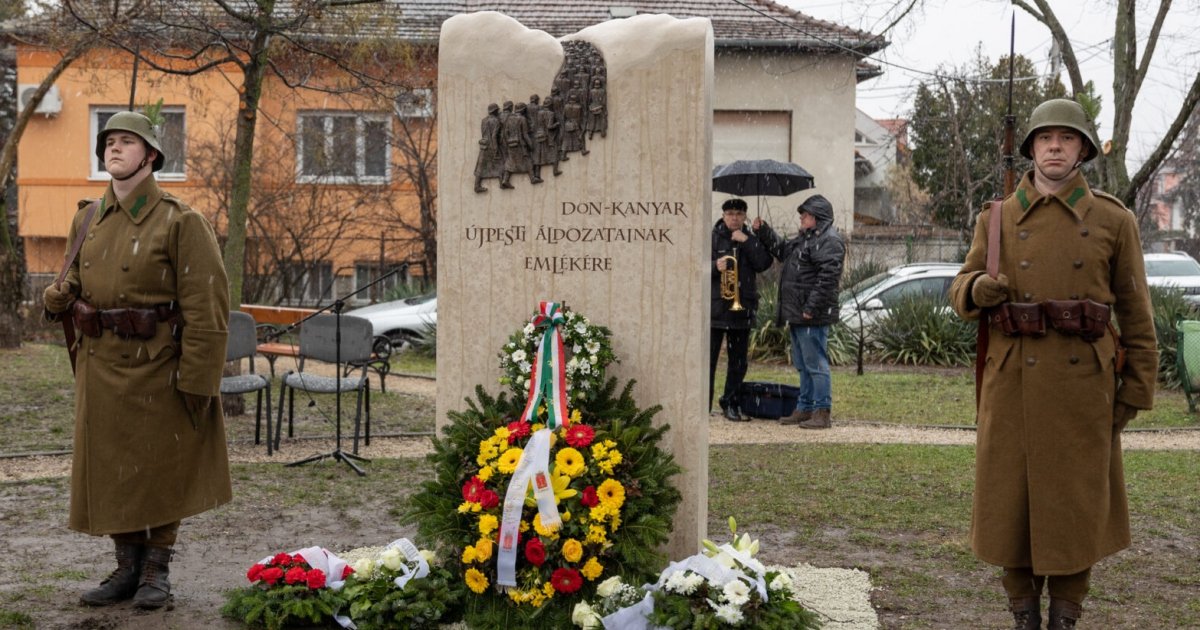 A monument was erected in Újpest to the soldiers who died at the Don River
A monument was erected in Újpest to the soldiers who died at the Don River
February 16, 2023 at 8:00 PM
A memorial was inaugurated in the 4th District in honour of the Újpest soldiers who fell at the Don River in World War II. The work depicts the last marching column of soldiers marching far into the distance, on the reverse side of which five soldiers' graves can be seen.
On the way to Greater Budapest
February 2, 2023 at 12:30 PM
The area of Budapest has changed several times in the last 150 years. The unification of 1950, the creation of today's Budapest, did not come out of nowhere, at that time there had already been talking about developing Budapest and its surroundings for decades, and harmonising the ideas.
A community garden will be created in Újpest
May 24, 2022 at 3:00 PM
A community garden will be set up in Újpest on the site of an unused sports field bordered by Tavasz, Nyár and Viola streets. In addition to forty beds and fruit bushes, plans include building a garden house and a shady sandpit for children.
Can the Aquincum Bridge be car-free? - Only after the construction of the next section of the M0 will there be a new Danube bridge between Óbuda and Újpest
May 21, 2022 at 1:00 PM
Once again, the issue of the Aquincum Bridge is on the agenda, and the capital is asking the public for their opinion on what the new Danube crossing should look like and between which areas should it create transport connections. Although its construction is not expected in the near future, as it is conditional on the construction of the section of the M0 motorway between roads 10 and 11, and it is also preceded by the Galvani Bridge, but a suggestion has already been debated: alternatives include a plan of a car-free bridge.
Károlyi Sándor Hospital will be expanded with a new wing, the main building will also be renovated
May 11, 2022 at 9:00 PM
The Károlyi Sándor Hospital in Újpest will be expanded with a new part of the building. In addition to the construction of the new seven-storey wing, the main building of the hospital, designed by Miklós Ybl, will also be renovated, but a building deemed dangerous will also be demolished in the area.
The first visual plans of the Rákospalota – Újpest railway station have been completed
February 11, 2022 at 7:30 PM
The oldest railway station in Budapest, the Rákospalota – Újpest stop, will be renewed and modernized. The train station is neglected, cramped, not barrier-free, with tens of thousands used to travel daily. The Budapest Development Center commissioned the government to draw up the first visual plans, according to which the new narrow-gauge platforms at the new railway station will be replaced by spacious, covered, modern middle platforms. Access to the platforms will be completely unobstructed and the historic station building will be preserved and renovated during the upgrades.
A forgotten enormous railway bridge - Built for the Millennium, destroyed by war
November 7, 2021 at 10:30 AM
The Újpest Railway Bridge is a stepchild among the bridges in Budapest because it does not even have a regular name. There is almost no mention of it, even though trains have been running here for 125 years, and it plays an important role in traffic around Budapest. Pestbuda now remembers the birth of the first structure, which was built in 1896 for the millennium but was destroyed in World War II.
The clock tower in Káposztásmegyer was renovated
August 24, 2021 at 3:00 PM
A nice and interesting highlight of the microdistrict in Káposztásmegyer is the clock tower reminiscent of the Transylvanian belfries. The building, made of oak by handicrafts, was renovated and cleaned in August.
The first horse-drawn railway of Pest started 155 years ago
August 1, 2021 at 9:30 AM
On 1 August 1866, the regular services of the city horse-drawn railway started in Pest. The first route led from today's Kálvin Square to Újpest, the journey time was 35 minutes. The new means of transport advocated by Count Sándor Károlyi was successful, and the horse-drawn railway contributed significantly to the development of Újpest. A few years after the handover of the first track, Pest and Buda were almost enmeshed by horse-drawn railway tracks.
The flood of 1876 – Devastation in Buda and Pest
February 28, 2021 at 9:00 AM
The flood of 1838 is part of our collective memory; everyone in Budapest has heard of it. However, it was not the last major flood that wreaked havoc in the capital. In 1876, 145 years ago, the river flooded, mainly damaging Buda but causing houses to collapse in Pest. Today, Budapest is safe from floods, which is mainly thanks to our ancestors' efforts in the 19th century.
From military training ground to nature preserve
February 21, 2021 at 9:00 AM
Not far from Megyeri Bridge, an environment filled with rare plants has survived, with biodiversity that would be sensational anywhere in the country. Yet a few decades ago, the Újpest Homoktövis Nature Reserve, one of the last remnants of the Rákos Fields, was still a military training ground. Join Pestbuda on the newest instalment in a series that explores the national wonders of Budapest.
New bridge may be built near Aquincum
December 9, 2020 at 10:00 AM
The Budapest Transport Centre has begun preparations for the construction of a new bridge which would connect Aquincum in Óbuda with Újpest.
Construction of metro line 3 completed thirty years ago
December 5, 2020 at 9:00 AM
The construction of metro line 3 was a massive undertaking. After 20 years, it is still not fully completed, while its existing sections have been under constant renovation for years. Its last phase was opened 30 years ago, in December 1990.
Márai statue unveiled in Újpest
November 19, 2020 at 9:00 AM
The new bronze bust of the writer Sándor Márai was erected in the suburbs of Újpest on Szent László Square.
Once known as Stalin Bridge, Árpád Bridge turns 70
November 9, 2020 at 9:00 AM
Its construction was abandoned during the Second World War. It bore Stalin's name for six years and was the longest bridge in the country for years. Árpád Bridge is now seventy years old.
Újpest City Hall 120 years old
August 22, 2020 at 9:00 AM
One of the symbols of Újpest, the town hall, which was inaugurated 120 years ago, on 21 August 1900, was designed by the outstanding architects of the age, Ármin Hegedűs and Henrik Böhm. Originally a town hall and then city hall from 1907, the historic building, which bears Art Nouveau features, is still in the service of the local population.
More articles
 The „intertwined history” of the bridges and the city of Budapest
Which ideas and events have shaped the fate of bridges of Budapest and the cityscape? Alongside many other interesting facts, this question is also answered this newly published book by the Budapest City Archives, which introduces the history of bridges in Budapest.
The „intertwined history” of the bridges and the city of Budapest
Which ideas and events have shaped the fate of bridges of Budapest and the cityscape? Alongside many other interesting facts, this question is also answered this newly published book by the Budapest City Archives, which introduces the history of bridges in Budapest.
 The Bridge Report, which brought a turning point in the history of Budapest
A travel report that changed the history of Pest and Buda, as well as Hungary. The little book contributed to the change of half a thousand years of legal customs and the implementation of an investment of unprecedented size and technical quality. This book was The Bridge Report [Hídjelentés in Hungarian].
The Bridge Report, which brought a turning point in the history of Budapest
A travel report that changed the history of Pest and Buda, as well as Hungary. The little book contributed to the change of half a thousand years of legal customs and the implementation of an investment of unprecedented size and technical quality. This book was The Bridge Report [Hídjelentés in Hungarian].
 Drama on the university wall - The heroic monument was planned 95 years ago
In the constant hustle and bustle of the Egyetem Square in Pest, the students may not even notice the monument that decorates the short section of wall between the church and the central building of ELTE. However, it commemorates their predecessors, the heroes who fought for their country in World War I, and those who heroically helped them. The first design of the dramatically collapsing soldier was born in 1928, ninety-five years ago.
Drama on the university wall - The heroic monument was planned 95 years ago
In the constant hustle and bustle of the Egyetem Square in Pest, the students may not even notice the monument that decorates the short section of wall between the church and the central building of ELTE. However, it commemorates their predecessors, the heroes who fought for their country in World War I, and those who heroically helped them. The first design of the dramatically collapsing soldier was born in 1928, ninety-five years ago.

